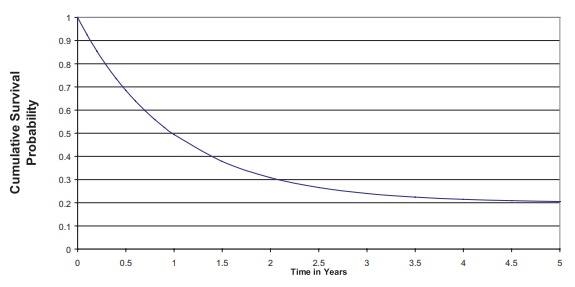Survival Probabilities: Cure Rate Models
| Home | | Advanced Mathematics |Chapter: Biostatistics for the Health Sciences: Analysis of Survival Times
Berkson and Gage (1952) first discussed a mixture model that is the most popular and easy to understand cure rate model.
Cure Rate Models
Cure rate models can be estimated by using the same
survival data described in the previous section. However, in producing survival
curves, we usually assume that the cumulative survival probability S(t)
goes to zero as t approaches
infinity. In cure rate models, we assume that some fraction of the patient
population afflicted with a particular disease is actually cured, will not die,
and will not experience a recur-rence. This proportion is called the cure
fraction or cure rate. With a Kaplan–Meier curve, a cure rate would show up as
a nonzero asymptote to the curve. By that we mean that the survival probability
curve will flatten out at a value p
equal to the cure rate.
Berkson and Gage (1952) first discussed a mixture
model that is the most popular and easy to understand cure rate model. It
assumes that a certain fraction p of
the entire population will be cured by the treatment and the remaining 1 – p fraction of the population will not be
cured. Equation 15.2 defines the mixture model for the population survivor
function S(t) by using p and 1 – p:
S(t) = p + (1 – p)S*(t) (15.2)
Figure 15.1 shows a mixture survival curve with S*(t)
representing an exponen-tial survival curve with rate 1 event per year and p, the cure proportion, equal to 0.2.
for any t > 0, where p is the cure fraction and S*(t)
is the survival function for the uncured subpopulation.
The survivor function S*(t) can be estimated by
parametric or nonparametric methods. Maller and Zhou (1996) provide extensive
treatment of cure models using the frequentist approach. Ibrahim, Chen, and
Sinha (2001) cover cure models from the Bayesian perspective and provide many
additional references. We will not pursue this topic further.

Figure 15.1. Exponential cure rate model with
cure rate p = 0.2.
Although the concept of cure rates goes back to the
1950s, much of the research activity on this topic took place in the 1990s.
Good algorithms for mixtures, such as the EM algorithm or a Markov chain Monte
Carlo algorithm, became popular as re-cently as the 1980s and 1990s. Available
at no charge, the software package Win-BUGS performs Gibbs sampling algorithms
for Markov chain Monte Carlo appli-cations. (See Chapter 16.)
Related Topics
